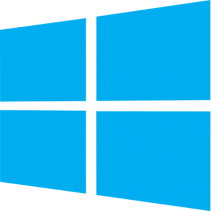Ferrum Technology Services Blog
Windows 10 Is Here - Everything Your Business Needs to Know
 Microsoft’s latest PC operating system arrived with fanfare yesterday, and has received overwhelmingly positive reviews so far, but is it ready for your business? Let’s take it for a spin and find out.
Microsoft’s latest PC operating system arrived with fanfare yesterday, and has received overwhelmingly positive reviews so far, but is it ready for your business? Let’s take it for a spin and find out.
Is Windows 10 Free?
First, let’s talk about how Microsoft is handling the licensing/upgrade model. This has caused a lot of confusion over the past few months.
If you are running a legitimate copy of Windows 7 or Windows 8, it’s likely that you’re eligible to upgrade to Windows 10 for free. There are a few requirements:
- If you have Windows 7, you need to be updated to Service Pack 1
- If you have Windows 8, you need to be updated to Windows 8.1.
- Your version of Windows needs to be a registered copy.
- Windows 7 and 8 Enterprise are NOT eligible for the free upgrade.
- Windows RT is not eligible for the free upgrade.
- You have one year from July 29th, 2015 to get your free update to Windows 10.
In short, most Windows 7 and 8.1 users will be able to upgrade their operating system to Windows 10 for free, as long as they do it within the next year.
What’s New in Windows 10?
The Slickest Windows Experience Yet
Since a lot of people didn’t care for some of the changes made in Windows 8 and 8.1, Microsoft toned down what wasn’t working. The Metro Live tile interface that received a lot of flack has returned, but it’s less intrusive. Unless you’re using a tablet-like device or you want it front and center, the brightly-colored tiles stay tucked away.
Cortana
Microsoft’s answer to Siri, Cortana, is integrated with Windows 10. Cortana brings voice search capabilities to Windows in much the same way Siri does for the iPhone. She can help search for files, open applications, and search Bing. It’s nice to see this technology finally hit desktops and laptops, but it’s pretty clear smartphones are the ideal environment for Cortana.
We don’t foresee many people talking into their PC’s microphone the way they might on their mobile device. Also, Android users will immediately feel out of place without any integration with Google. As expected, Microsoft’s Cortana is solely partnered with Microsoft Bing for web searches. It’s not a terrible interface, but power users are going to feel a little odd not having the choice.
Asking Cortana to “sing a song” almost makes up for this shortcoming though (give it a try).
Lots and Lots of Little Tweaks
There are new keyboard shortcuts, better window controls, improved notifications, and a lot of other little improvements. Most users probably won’t dig into these very deeply, but if you want to get the most out of your gadgets, Windows 10 delivers users a lot of nifty improvements to explore. One of the most interesting additions is virtual desktops, which allow you to spread your work across multiple desktops that you can cycle through quickly.
The New Browser
Microsoft Edge, the long awaited replacement for Internet Explorer, is a huge improvement. The browser is faster, more secure, and has a lot of modern features reminiscent of smartphone browsers. It’s easy to share information, take notes, and get access to relevant information. Edge might not convert any die-hard Firefox or Chrome fans, but it should improve the experience of users who just use what browser the operating system gives them. Furthermore, you can take notes and draw on web pages for future reference.
Tighter Integrations with Office 365
This is where things start to get really interesting. It’s easier than ever to work on, collaborate, and share Office 365 documents. Your Office 365 files sync seamlessly, making Windows 10 ideal for Office 365 users. Be sure to subscribe to our blog for more information as we dive into this deeper over the next several weeks.
Windows 10 is Fast
Typically, with every new operating system Microsoft has launched, the hardware requirements have gone up. More capable operating systems require better hardware to run, so some older systems don’t handle the upgrades well. With Windows 10, the system requirements are almost comically low. You probably can’t get away with running Windows 10 on a decade-old PC, but a laptop that wasn’t handling Windows 8 all that well might get a second wind with Windows 10.
Sounds Great! Should I Upgrade Today?
For many users, upgrading to Windows 10 is going to be relatively painless. However, most businesses will want to consult a computer expert before impulsively upgrading important software. It’s not that the upgrade process is difficult (Microsoft has made it fairly simple), it’s just that there could be a problem that pops up with the rest of your IT environment.
What applications are you using? Are they compatible with Windows 10? What about all of your hardware? There are a lot of complicated (and not-so-complicated) questions to ask yourself before you upgrade. Our technicians will be able to provide answers to these questions, ensuring that upgrading away from your current OS is the best strategy for your company.
Remember, it’s no easy feat to go backwards. Our recommendation is to contact the technicians at Ferrum Technology Services and set up an evaluation to see if you’re eligible for the free Windows 10 upgrade. Their professional opinion will help you determine how smooth your desktop’s transition will be. You can risk a lot if you simply do it yourself, especially in a business environment. So tread carefully.
Want to know if Windows 10 will work for your business? Give us a call at (847) 697-3282.
